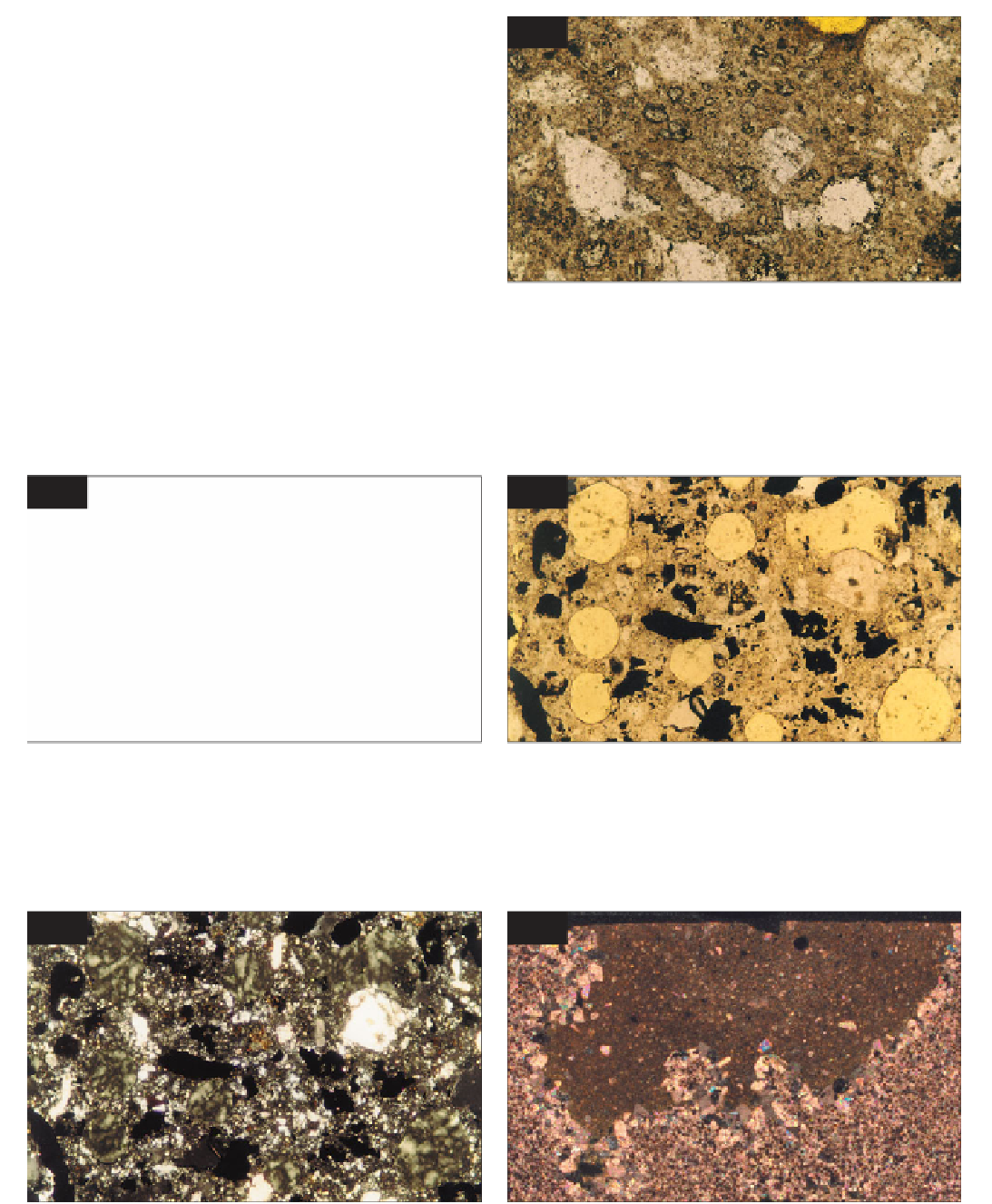Geoscience Reference
In-Depth Information
333
aluminate cement, with calcite filler and quartz fine
aggregate. Figures
333
and
334
show a proprietary
white-coloured tile adhesive, comprising polymer
modified white Portland cement, with calcite filler and
quartz fine aggregate. The adhesive is designed to be
very fast setting and it includes a latex additive. Figures
335
and
336
show a flexible floor tile adhesive,
apparently comprising particles of rubber and calcite
dust filler, bound by a matrix of resin and Portland
cement.
Figure
337
shows a mortar used as 'stone filler'. A
mixture of calcite dust and white Portland cement has
been used to fill voids sympathetically that occur
naturally in travertine floor tiles.
333
Proprietary white tile adhesive. The cement
matrix appears brown and includes a frequent
abundance of unhydrated/partially hydrated white
Portland cement grains. Fine aggregate particles are
shown white; PPT, ×150.
334
335
334
Same view as
333
in cross-polarized light. The
uncarbonated polymer modified cement matrix is iso-
tropic (black) and small particles of calcite filler are now
clearly seen (light brown). The brightly coloured 'blocky'
particle in the centre right is anhydrite; XPT, ×150.
335
Flexible floor tile adhesive with particles of
rubber (black) and calcite dust filler bound by a matrix
of resin and Portland cement. Air voids appear yellow
and an unhydrated cement grain is seen in the centre
of view; PPT, ×150.
336
337
336
Same view as
335
in cross-polarized light. The
resin/Portland cement matrix is isotropic (black) and
calcite filler particles appear bright; XPT, ×150.
337
'Stone filler' mortar (brown) filling a void on the
top surface of a natural stone (travertine) floor tile;
XPT, ×25. (Courtesy of Mike Eden.)




